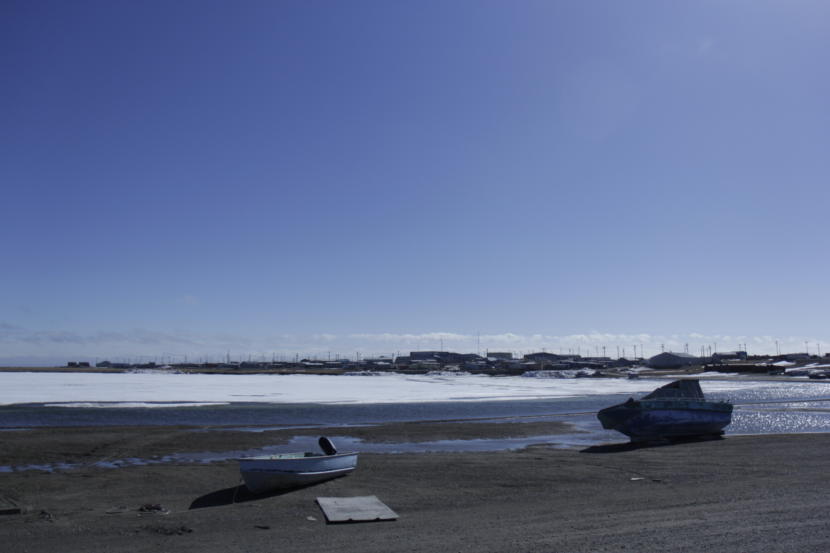
After Congress opened the Arctic National Wildlife Refuge to oil drilling in 2017, the Kaktovik Iñupiat Corp. (KIC) should have been poised for a new era of prosperity.
Instead, its businesses were mired in lawsuits.
The corporation, which grew out of the 1971 Alaska Native Claims Settlement Act, was designed to generate profits for indigenous Iñupiat shareholders from Kaktovik, on the Arctic coast — the only village inside the refuge boundaries.
That auspicious location put the corporation in a prime position to strike deals with oil companies seeking to do business in the refuge’s coastal plain. But a contract to clean up an old federal well elsewhere on the North Slope had gone awry, with more than $5 million in losses for a company that’s 51 percent owned by KIC, according to court documents.
The company filed a lawsuit in April to recover the money. But with that case unresolved a month later, KIC’s businesses were facing more than a half-dozen of their own lawsuits from an array of creditors.
Then, John Rubini stepped in.
Rubini is one of Alaska’s most successful investors; his real estate company’s properties include several of Anchorage’s largest buildings, like the downtown offices of oil company ConocoPhillips. Forbes calls him one of the state’s two richest men.
In May, Rubini helped stave off the creditors and, with the corporation and a few other investors, formed a joint venture. The idea is to merge KIC’s local knowledge and proximity to the refuge with the investors’ deal-making experience, Rubini said in a phone interview.
“If there’s going to be development activity, I wanted to make sure that the community of Katovik had the tools and resources to participate fairly and effectively in that process,” Rubini said.
Rubini’s interest in Kaktovik underscores how the coastal plain’s opening has put the village in a new spotlight. It’s still too early to know if petroleum even exists in the refuge in commercially-viable quantities. But if it’s found, Kaktovik’s residents are simultaneously positioned to be among the biggest beneficiaries, and to experience some of the biggest disruptions.
The isolated village, on the oil-rich North Slope, already straddles the divide between traditional and modern. Oil industry taxes have helped pay for infrastructure in Kaktovik that’s lacking in other rural Alaska communities; its homes have flush toilets, and there’s a $16 million new basketball gym. Meanwhile, residents still subsistence hunt for caribou, and some of KIC’s board members double as captains of the boat crews that hunt whales off the coast.
While sharp divisions still exist over oil drilling in the village, a string of recent political and business decisions have increasingly set Kaktovik on a course aligned with development. Last year, Kaktovik’s city council ousted an anti-drilling mayor, Nora Jane Burns.
“We want to make sure that the actual voice of Kaktovik and its people are heard. That hasn’t been the way it’s been in the past,” said Charles Lampe, a KIC board member and drilling proponent.
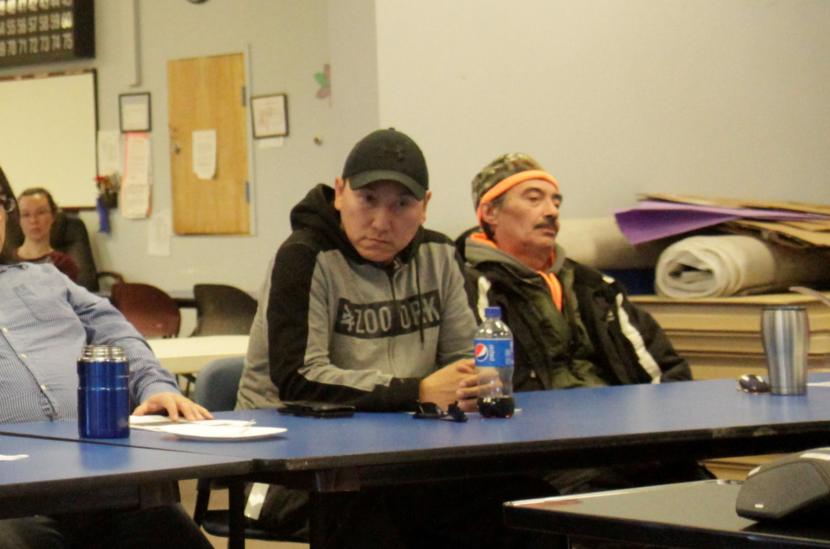
Opponents of development, meanwhile, have been increasingly marginalized in Kaktovik — and have turned elsewhere for help.
In December, Burns, the former mayor opposed to drilling, flew to Fairbanks. She was part of a group of Kaktovik residents that also included Evelyn Reitan, another drilling opponent, who was working at the time as the city administrator.
In Fairbanks, the delegation held an unusual meeting with leaders of the Gwich’in people, a different Native group that lives outside the coastal plain. The Gwich’in people, citing possible harm to the caribou they subsist on, have lobbied relentlessly to keep the refuge closed to development — much to the frustration of Kaktovik’s Inupiat drilling supporters, who see the coastal plain as their land to manage.
When Kaktovik’s drilling supporters found out about the summit, it didn’t sit well, since many view the Gwich’in people as adversaries in the fight over the refuge. But Burns, who remains on the city council, said she felt compelled to go, though she knew it would “upset some people.” She and other Kaktovik drilling opponents have the same concerns as the Gwich’in, about the caribou, she said.
“You have to hear what they have to say, because they eat the same animals that migrate into our land,” she said
Bernadette Demientieff, a Gwich’in leader who participated, said she didn’t want to get into the specifics of the discussion, though she called the meeting a “healing and honest conversation.” But the event didn’t help the drilling opponents’ standing in Kaktovik: The village’s new mayor, Amanda Kaleak, subsequently fired Reitan from her job as city administrator.
Kaleak declined to be interviewed about city politics and her own views on development, saying she had to remain “unbiased.” But last year, when Burns was still mayor, Reitan had worked with her and the rest of the city council to issue a statement on Kaktovik’s behalf that called federally-run oil and gas development a “hostile process being imposed by government agencies acting in bad faith.”
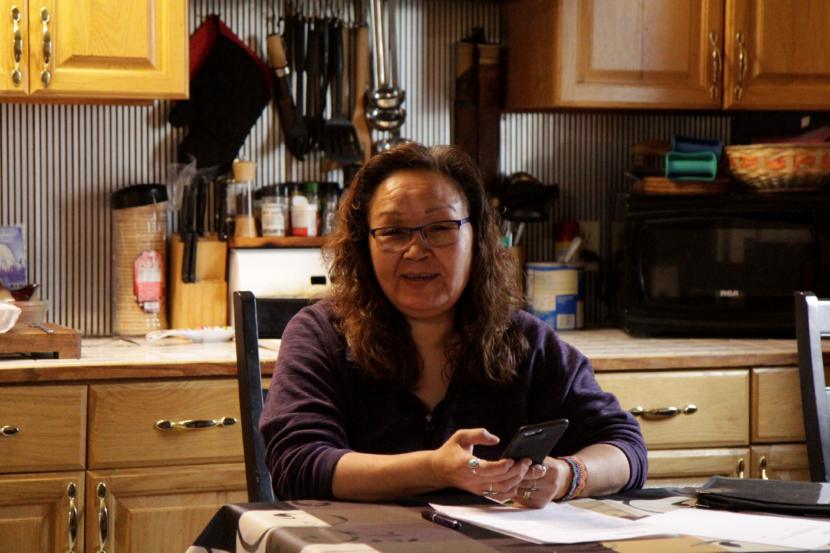
Reitan said she wasn’t given an explanation for her firing. She said she thinks a lot of things went into the decision — though she also said that she saw the move as driven by people she’s clashed with in the village, who support oil development.
The stakes
To understand what’s at stake in Kaktovik, the best place to look is 175 miles to the west — at Nuiqsut, another North Slope Inupiat village that Kaktovik residents on both sides of the drilling debate cite as a cautionary tale.
Nuiqsut sits at the edge of the National Petroleum Reserve in Alaska, an Indiana-sized tract of federal land that’s become a hot oil prospect in the past few years.
Kuukpik Corp., the Native claims settlement corporation that’s Nuiqsut’s version of KIC, owns more than 200 square miles inside the reserve’s boundaries. And it’s leveraged those holdings into lucrative oilfield-service contracts and land use agreements with oil companies. Those deals, in turn, help sustain annual dividends of $30,000 for each of Kuukpik’s shareholders.
The flip side of that? Oil developments have slowly encircled Nuiqsut; a major oil processing facility is visible on the horizon. As much as one-third of the area that residents use for subsistence hunting and fishing has been affected by development, according to Kuukpik. And some residents fear that diminished air quality is affecting their health.
A recent poll of 93 people conducted by Kaktovik’s city government found half in favor of oil development in the coastal plain, 30 percent opposed and the rest undecided.
But even opponents of drilling say they’re frustrated by the way the federal government has thwarted development on Kaktovik’s corporate lands inside the refuge.
On a map, Kaktovik is a dot, on the Beaufort Sea coast midway along the refuge’s northern edge. But residents see a huge swath of the refuge lands to the south, all the way to the Brooks Range mountains, as their territory, too.
The Iñupiaq people have thousands of years of history on the North Slope, and some used Barter Island as a seasonal home to fish, and hunt for marine mammals. When they weren’t along the coast, they were hunting sheep and caribou in the mountains.
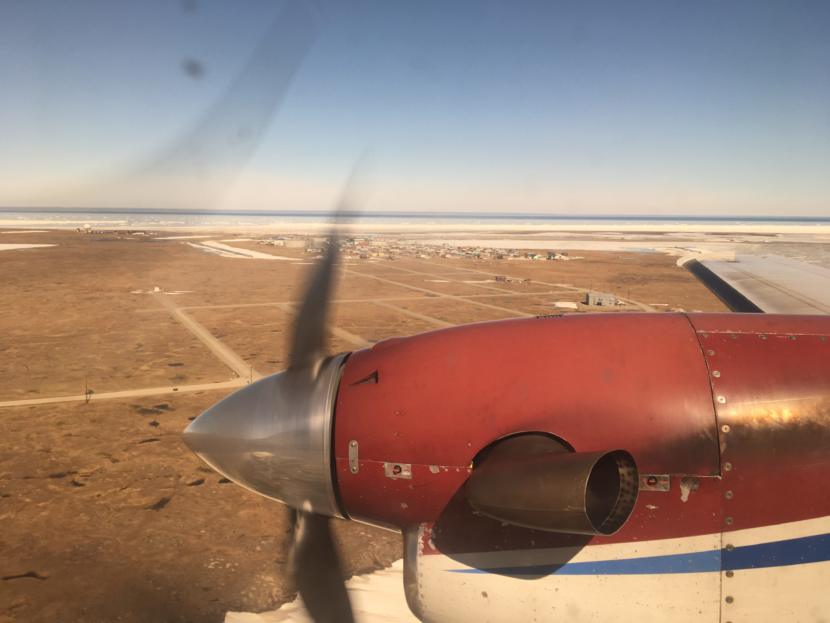
“None of this country is wilderness. It never has been. It has been continuously used and occupied by us and by our ancestors for millennia,” Kaktovik residents wrote in “In This Place,” a 1991 manifesto that outlines their views about land and development.
Through the 1971 Native claims settlement act, Kaktovik’s village corporation received a little less than 150 square miles, or less than 10 percent of the area that Congress opened to oil leasing two years ago.
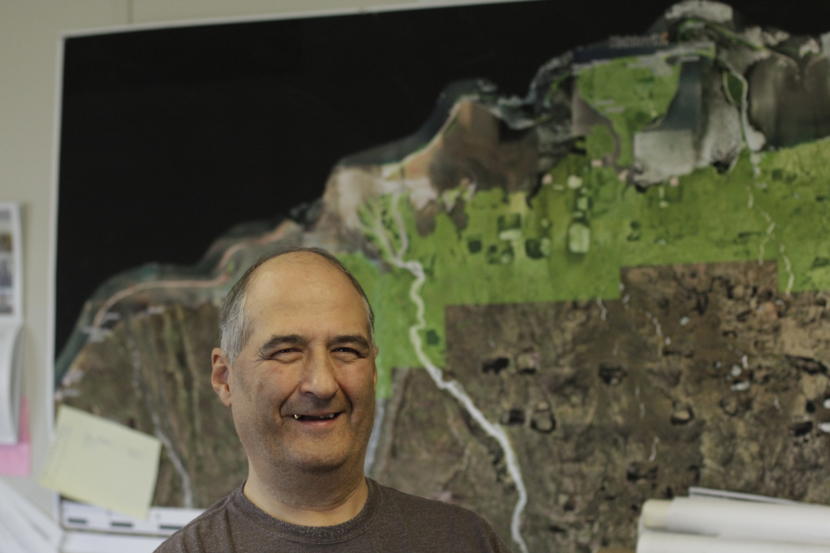
Even that comparatively small, corporate-owned area was off-limits to drilling until lawmakers’ 2017 vote. And Kaktovik’s residents, along with everyone else, are barred from driving four-wheelers into the surrounding Arctic Refuge land — unless they have a Native allotment and a special federal permit.
“The federal government took all our property, all the resources in the mountains, and gave us just a sliver,” said Edward Rexford, an avid supporter of oil development who works for KIC. “We felt kind of shortchanged.”
Land already leased
The support for development among Kaktovik residents stems, in large part, from the ample benefits they’ve already derived from oil production in Prudhoe Bay, to the west.
Drilling boosters envision an array of new gains that could come from development on the coastal plain: jobs, cash flowing into the village, new infrastructure like natural gas piped in to heat people’s homes, or even road access.
Kaktovik Iñupiat Corp., with two other companies, has already formed a business partnership that’s asked for federal approval to collect geologic data about the refuge that could be sold to the oil industry.
Those types of ventures — partnering with or working for other, larger businesses involved in the search for oil in the refuge — are likely to yield the most immediate benefits for KIC.
But beyond getting a chunk of the drilling action, more direct benefits to Kaktovik could come from development on the 150 square miles of coastal plain owned by KIC — which is also the area closest to the village. Oil production from those corporate lands could generate a lucrative stream of royalties for KIC and Arctic Slope Regional Corp. ASRC is the regional Native corporation for the entire North Slope, and it owns the rights to the oil beneath KIC’s land.
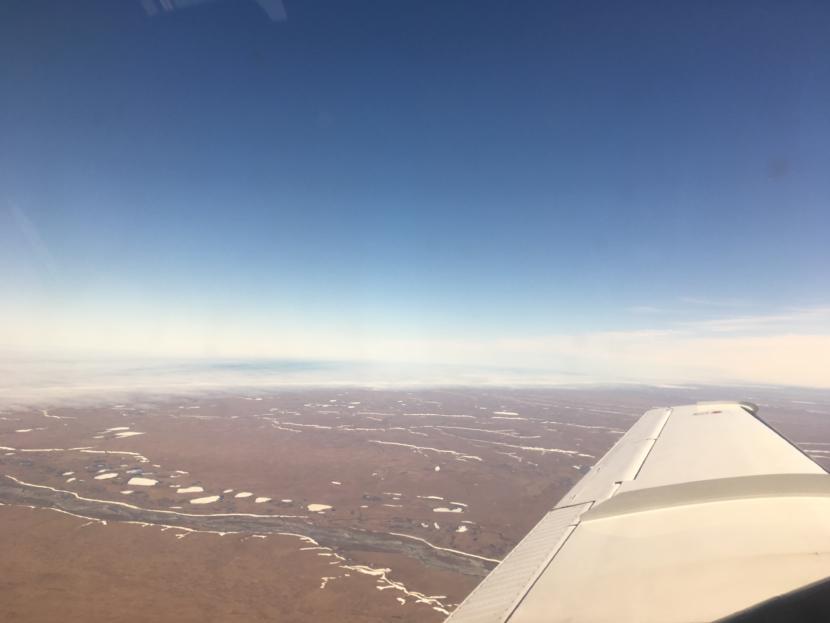
Congress placed a 2,000-acre limit on oil infrastructure in the refuge in its 2017 vote. But that limit only applies to federal land, not corporate land. And ASRC has already leased its entire 150-square-mile area to oil companies Chevron and BP.
The agreement was signed in 1984, and afterwards, the oil companies spent $40 million on the only oil well ever drilled on the refuge’s coastal plain. The companies have gone to extraordinary lengths to keep the results secret, though a recent New York Times investigation suggested they were not promising.
When the coastal plain remained closed to drilling, ASRC allowed Chevron and BP to suspend their lease payments. But since Congress opened the area in 2017, those payments have resumed, said Teresa Imm, an ASRC executive who works on resource development.
Imm, in a phone interview, declined to discuss the financial details of the lease. But she said ASRC is proceeding cautiously. It’s too late, she added, for companies to make plans to drill exploratory wells next winter; if there was a proposal for the following winter, ASRC would work with Kaktovik to try to provide economic opportunities while minimizing negative impacts on the village, Imm said.
“Everybody thinks there’s this rush to the finish line. But because ANWR’s been sitting there unopened for years and years, there’s lots of work that has to be done to get ready for a program, including on our lands,” she said. “It’s a constant dialogue.”
How close to home?
Not everyone in Kaktovik trusts ASRC to safeguard the village’s interests, given that the regional corporation — Alaska’s largest privately held company, with some 12,000 employees — has its own financial interests at stake.
ASRC is based in Utqiagvik, 300 miles to the west, and that distance means that the corporation’s executives won’t feel the impacts of drilling as acutely as Kaktovik’s residents.
The corporation does, however, stand to receive an unusually large share of any oil revenue: Normally, the Native claims settlement act requires that regional corporations like ASRC share 70 percent of their resource development revenue with the 11 other regional corporations. But that requirement doesn’t apply to the corporate lands outside Kaktovik, because ASRC acquired the oil rights through a special land trade with the federal government.
Carla Kayotuk, a drilling opponent from Kaktovik, described being galvanized when she heard a former North Slope Borough mayor and ASRC board member, George Ahmaogak, talking on the radio. Ahmaogak, Kayotuk said, was vowing to block oil development around Teshekpuk Lake, a different area of the North Slope where he and other Utgiagvik residents have hunting and fishing cabins.
“I’m like, ‘Wait a minute!’” Kayotuk said. “‘You’re willing to open up my homelands for oil development but you don’t want it in your area?’ I’m like, ‘No, I’m not going to be quiet any more.”
Drilling opponents like Kayotuk said there’s already evidence that the village’s needs are being skipped over in the opening of the refuge.
For years, Kaktovik’s residents and institutions pushed for provisions in refuge-related legislation that would protect the village from and compensate it for impacts that arise from oil development. But none were expressly included in the 2017 bill — no Congressionally-mandated provisions to divert any of the oil revenue to Kaktovik, or to accommodate the village’s subsistence practices.
“The political process that led to the final vote to open ANWR required the legislation to be stripped down to its bare financial bones, without any of the meat addressing environmental protections, subsistence use and access, community impact aid and other provisions that define our region’s stake in the venture,” Sayers Tuzroyluk Sr., president of the pro-drilling Voice of the Arctic Iñupiat, wrote in an opinion piece last year.
U.S. Sen. Lisa Murkowski, who led the push to open the refuge to drilling in the 2017 tax bill, was unavailable for an interview, a spokeswoman said.
Kaktovik’s drilling boosters said they have no interest in oil development that would harm the spots residents hunt and fish; they use those areas, too.
“We want to make sure those places are identified and set off-limits, and make sure that the development isn’t going to intrude,” said Lampe, the village corporation board member, who also captains a whaling crew. Opponents of development, he added, “think that we’re trying to make where it’s just going to be a big oil field out there. That’s not what we’re trying to do.”
But Burns, the anti-drilling city council member and former mayor, said she thinks it will be tough for Kaktovik to stop development from happening in the areas that companies find petroleum.
“No matter what we say or do, I think they’re going to try to go where the oil is easily extracted,” she said.
Lampe said KIC is taking steps to keep oil development from dividing the community, namely by issuing a new class of shares.
In Nuiqsut, where the village corporation pays huge dividends stemming from nearby oil production, that dynamic has created something of a generational split: older residents who own shares tend to support development, while younger people who lack them are more likely to oppose it. Kaktovik’s village corporation wants to avoid that problem, and last month, its board decided to roughly double the number of its shareholders.
It’s better to do that, Lampe said, “before one drop of oil is developed, before any money is taken in.”
“We want to make sure that it doesn’t only benefit the original shareholders,” he added. “Because there are so many more of us that are going to be affected by development.”
Ravenna Koenig contributed reporting to this story.
